The menstrual cycle is controlled by the complex interplay of four hormones: luteinizing hormone (LH), follicle-stimulating hormone (FSH), estrogen, and progesterone. But how do these hormones work and what happens to them during our cycle?
Hormones in the menstrual cycle
The first two, LH and FSH, are produced in the pituitary gland, a gland in the brain, and released into the bloodstream until they reach the ovary. There, they stimulate the production and release of estrogen and progesterone, also known as female hormones. Estradiol is the hormone produced in the ovary during the first half of the cycle (proliferative phase) after being stimulated by FSH. Progesterone is the hormone produced in the second half of the cycle (luteal phase) by the corpus luteum, a structure that forms in the ovaries after ovulation.
These four hormones play a very important role during the menstrual cycle and increase or decrease depending on the time of the cycle.

Hormones in the first half of the cycle - proliferative phase
From this beginning of the female cycle (first day of menstruation) and for about 7 days, FSH levels rise and stimulate estrogen production in the ovary. This selects the follicles and causes them to enlarge. If the estrogen concentration is too high, it inhibits FSH production, so that a dominant follicle is selected. This results in only one follicle developing in each cycle. Before ovulation, estrogen levels drop again.
LH production remains low during the first half of the menstrual cycle and peaks around the 14th day of the cycle.
Hormones in the second half of the cycle - luteal phase
After ovulation, the corpus luteum begins producing progesterone, and levels rise in the second half of the cycle. This causes changes in the uterus that prepare it for possible implantation in the event of fertilization.
LH and FSH production decreases during the second half of the cycle. Estrogen levels rise slightly again. At the end of the cycle, the decline in LH levels leads to a decrease in estrogen and progesterone levels . This causes the uterine lining to shed. While estrogen and progesterone levels drop, PMS symptoms may increase until the pituitary gland increases FSH and LH production again and the new cycle begins. Symptoms usually begin in the second half of the menstrual cycle. They usually disappear 1 to 2 days after the onset of menstruation.
Hormonal imbalances and glucose: What happens?
A hormonal imbalance can disrupt this complex interplay between hormones, the brain, and the reproductive organs. The following factors can help maintain hormonal balance .
- Healthy lifestyle habits (healthy and balanced diet and regular exercise)
- Healthy environmental conditions (avoid stress and ensure sufficient sleep)
- Balancing blood sugar levels in a healthy range
By continuously measuring your blood sugar level, you can ensure stable blood sugar and insulin levels.
Insulin plays a key role here. High insulin levels disrupt hormone production in the ovaries and impair the balance between estrogen, progesterone, and testosterone . These imbalances affect women's health . One of the first consequences is that PMS symptoms can worsen or intensify. Many women experience increased sugar cravings (keyword: food cravings) and suffer from fatigue and stress during PMS.
Find balance and regulate your blood sugar levels with the help of a continuous glucose monitor (CGM) and Hello Inside.




